|
Earth's features (mountains, valleys, volcanoes, etc.) are possible thanks to the plate tectonics and tectonic
plates. There are different types of plate boundaries wich create different features.
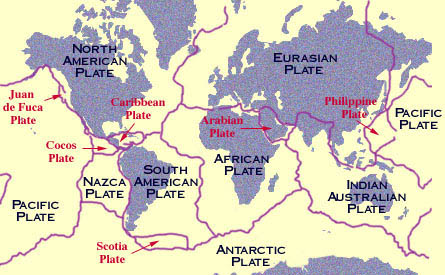
|
| Tectonic plates |
The 3 different types of boundaries are:
- Convergent boundaries
- Divergent boundaries
- Transform boundaries
Convergent Boundaries:
They are also known as destructive boundaries. Convergent boundaries form when two or more tectonic plates
or fragments of lithosphere move toward one another. The can form either subduction zones or continental collisions, depending
on the nature of the plates. In subduction zones, normally the subducting plate is an oceanic plate wich moves beneath other
plate (oceanic or continental). During collisions ( between two continental plates) large mountains are formed.
|
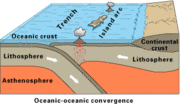
Oceanic + Oceanic = Subduction Zone
|
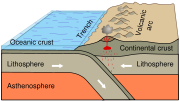
Oceanic + Continental = Subdiction Zone
|

Continental + Continental = Coninental Collision
|
Himalayan mountains are an example of convergent boundaires, specifically the result of a continental collision.
Divergent Boundaries:
Also known as constructive boundaries and extension boundaries. They form when two tectonic plates move away from each
other. These areas can form in the middle of continents but eventually form ocean basins. Divergent boundaries within
continents initially produce rifts which produce rift valleys. If the rifting process stops, a failed rift results. Therefore,
most active divergent plate boundaries exist between oceanic plates and are often called oceanic rifts. Divergent boundaries
are a type of stress called tension. It is when two bodies of land are spread apart.
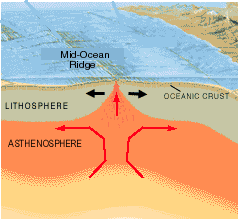
|
| Divergent Boundary |
An example of divergent boundaries is the Great Rift Valley.
Transform Boundaries:
Known too as fault boundaries and strike-slip boundaries, the form when to plates slide and grind against each other.
Many transform boundaries are locked in tension before suddenly releasing and causing earthquakes. Most transform boundaries
are found on the ocean floor, where they often offset active spreading ridges to form a zigzag plate boundary. But, they
can also be found in land.
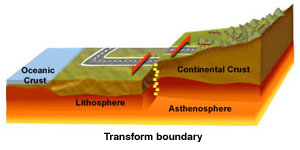
|
| Transform Boundary |
A very famous example of transform baoundary is the San Andrea's Fault. Scientists predict that in about ten million
years, Los Angeles and San Francisco will be side by side.
|

San Andrea's Fault in California, USA
|
|
